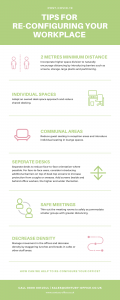From businesses to individuals, we have all been affected one way or another by the Coronavirus pandemic. While we know that many businesses have had an extremely difficult time, some businesses have managed to turn their fortunes around. In fact, many businesses are enjoying some very positive changes that have come out of the situation.
Office Culture To Supportive Culture
For decades, we have been engrained to believe that 9 to 5, office-centric work was the best thing for business. As employees have been forced to work from home, and companies have had to embrace this change, we’re experiencing a change in productivity and employee freedom.
This shift in working life has encouraged businesses to take only the best parts of office culture, and free employees from inefficient processes and bad habits. Leaders are switching their focus from office culture to a more supportive culture, with a new focus on how to improve the lives of employees while still getting the best from them.
Virtual-First Companies
Many companies are taking steps towards hybrid working environments, where teams can work both remotely and in the office.
This shift in the way we work has seen a rise in companies becoming ‘virtual first’. This means that workplaces are being distributed across offices and homes, and employees have the freedom to choose how they work.
For companies to successfully work in this innovative way, they must be virtual-ready. Leaders must know how to effectively manage, train and evaluate virtually, and technology must be in place to enable virtual working.
Overlapping Personal And Professional Lives
For years we have been keeping our professional lives and personal lives at a distance, with little overlap between the two. With the rise of Zoom meetings and remote working, it has given us an insight into team member’s private spaces.
Every video call and virtual meeting makes the personal lives of colleagues, managers and clients visible. We are now used to seeing employees’ children and pets on-screen, interrupting meetings and phone calls on a regular basis.
While this might seem like a distraction to the working day, in actual fact, these little glimpses into our personal lives can improve workplace relationships. When working from home, it is almost impossible to keep up an entirely professional persona, giving colleagues an insight into the real, personal life of team members.
These personal interactions are not unprofessional. Instead, they allow teams to connect and get to know each other in a new way. Overlapping personal and professional lives can help teams to work better together and understand one another’s everyday challenges.

